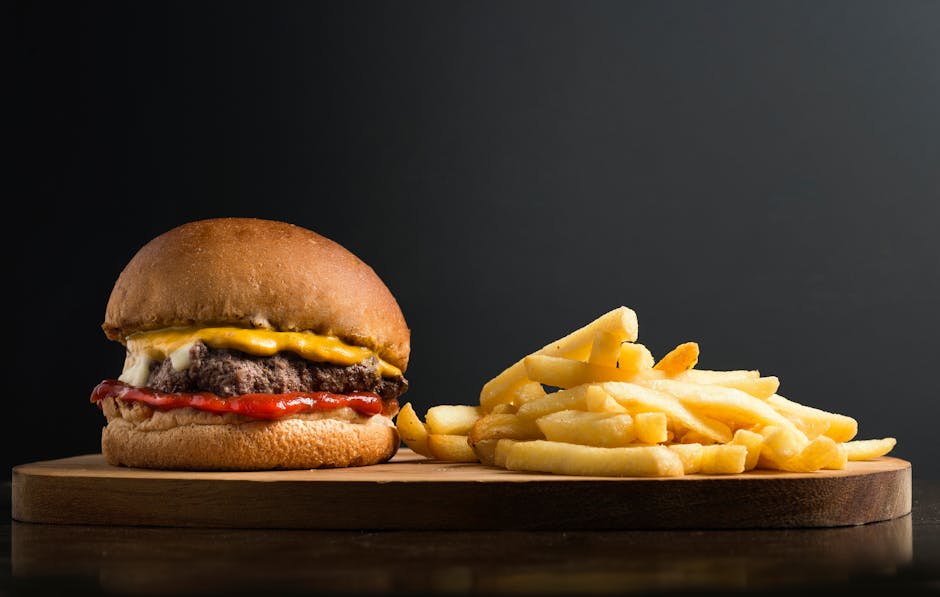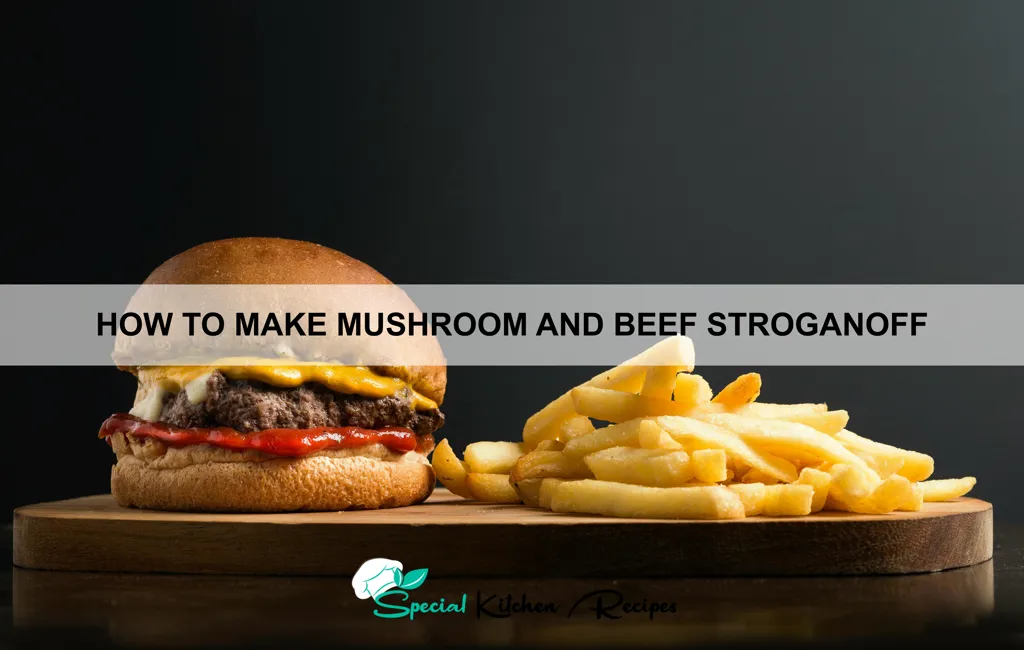Classic Beef Stroganoff, a dish synonymous with rich, creamy comfort, boasts a history as intriguing as its flavor profile. While its exact origins remain somewhat shrouded in culinary mystery, the most widely accepted narrative places its creation in 19th-century Russia, specifically within the aristocratic circles of St. Petersburg. Contrary to popular belief, it wasn’t named after a specific recipe from the Stroganov family, a powerful and influential noble clan. Instead, the dish’s association with the family likely stems from its popularity within their social sphere, perhaps even evolving from a simpler peasant dish elevated to elegant status within their kitchens. The precise recipe and its evolution over time are difficult to pin down definitively, with many variations arising across different regions and eras.
The dish’s true rise to international fame, however, occurred much later. Its widespread popularity in the West began in the mid-20th century, largely thanks to its adaptation and dissemination through American cookbooks and restaurants. This adaptation often involved adjustments to suit Western palates and readily available ingredients, resulting in variations that sometimes deviate significantly from the original Russian preparations. While authentic Russian Stroganoff often uses sour cream and a touch of lemon juice for brightness, many Western versions incorporate more cream, different types of mushrooms, and even paprika for a richer color and flavor. This reflects a broader trend of cultural exchange and adaptation in cuisine, where dishes evolve and transform as they travel across borders and through time.
Today, Beef Stroganoff remains a culinary staple, both in its homeland and internationally. Its enduring popularity is a testament to its versatility and satisfying combination of flavors and textures. While precise statistics on global consumption are elusive, the dish’s consistent presence on restaurant menus and its frequent appearance in home kitchens across countless countries speaks volumes. It is a dish that transcends cultural boundaries, offering a comforting and familiar taste experience, regardless of regional variations. The dish’s continued presence in modern cookbooks and its frequent featuring in popular culture, from television shows to films, further underscore its enduring appeal. Its rich history, coupled with its adaptable nature, ensures Beef Stroganoff will likely remain a beloved culinary classic for generations to come.
Beyond its deliciousness, Beef Stroganoff holds a certain cultural significance. It represents a bridge between culinary traditions, demonstrating how a seemingly simple dish can evolve and adapt, reflecting the ever-changing dynamics of cultural exchange. For many, it evokes feelings of nostalgia and comfort, representing family meals and cherished traditions. Its enduring appeal signifies not just a delicious recipe, but also a testament to the power of food in connecting people across time and cultures. It’s a dish that tells a story, a story of aristocratic origins, culinary adaptation, and enduring global popularity.
Ingredients and Measurements
Creating a truly delicious Classic Beef Stroganoff hinges on using high-quality ingredients and precise measurements. This recipe yields approximately 4 servings.
Beef: We recommend using 1 pound (450g) of sirloin steak, cut into thin strips against the grain. This ensures tenderness and allows for quick cooking. Avoid using tough cuts like chuck, as they will require significantly longer cooking times and may become tough even with tenderizing. If you prefer a leaner dish, you can trim away excess fat, but remember that a little fat adds flavor and richness.
Mushrooms: 8 ounces (225g) of cremini mushrooms are ideal. Their earthy flavor pairs perfectly with the beef. You can substitute with button mushrooms or a mix of different mushrooms for a more complex flavor profile. Clean the mushrooms thoroughly by wiping them with a damp cloth or using a mushroom brush. Avoid washing them under running water, as they will absorb too much moisture.
Onions: One medium yellow onion, finely chopped, provides a subtle sweetness that balances the richness of the dish. Shallots can also be used for a more delicate onion flavor. Ensure the onions are finely chopped for even cooking and to prevent large chunks from dominating the texture.
Sour Cream: 1 cup (240ml) of full-fat sour cream is essential for the creamy, tangy sauce. Do not substitute with low-fat sour cream, as it will lack the richness and body necessary for a classic Stroganoff. If you don’t have sour cream, you can use crème fraîche as a substitute.
Beef Broth: ½ cup (120ml) of good quality beef broth adds depth of flavor to the sauce. Avoid using bouillon cubes, as they can impart a salty or artificial taste. Homemade beef broth is ideal, but store-bought low-sodium broth is a perfectly acceptable alternative.
Butter: 4 tablespoons (57g) of unsalted butter are used throughout the recipe. Unsalted butter gives you better control over the salt content of the dish. Divide the butter as instructed in the recipe; some is used for sautéing the beef and mushrooms, and some is incorporated into the sauce.
Flour: 2 tablespoons (14g) of all-purpose flour are used to thicken the sauce. This creates a smooth and creamy consistency. Ensure the flour is incorporated fully into the butter before adding the broth to prevent lumps in the sauce.
Seasoning: Salt and freshly ground black pepper are used to season the beef and the sauce to taste. Start with a small amount and adjust according to your preference. Other optional seasonings include paprika, garlic powder, or a pinch of cayenne pepper for a touch of heat.
Fresh Parsley (Optional): 2 tablespoons of finely chopped fresh parsley can be used as a garnish. This adds a touch of freshness and vibrancy to the finished dish.
Pasta or Noodles (Optional): While traditionally served over egg noodles, you can serve your Stroganoff over your preferred pasta, rice, or even mashed potatoes.
Preparation: Beef and Vegetables
The success of a Classic Beef Stroganoff hinges on the quality of your ingredients and the precision of your preparation. We’ll start with the beef, the star of the show. For this recipe, we’ll use 1 pound of sirloin steak, trimmed of excess fat. While other cuts can work, sirloin offers a good balance of tenderness and flavor, crucial for a melt-in-your-mouth Stroganoff. Cut the sirloin against the grain into thin strips, approximately 1/4 inch thick. This is vital for ensuring even cooking and preventing tough, chewy beef. Cutting against the grain means slicing perpendicular to the muscle fibers, something easily accomplished with a sharp knife. A meat mallet can also be used to further tenderize the strips if desired, but be careful not to over-tenderize and make the meat mushy.
Now, let’s turn our attention to the vegetables. The foundation of our Stroganoff will be 1 large onion, finely chopped. Finely chopping ensures that the onion cooks evenly and doesn’t overpower the delicate beef flavor. We’ll also need 8 ounces of cremini mushrooms, sliced. Cremini mushrooms offer a rich, earthy flavor that complements beef beautifully. However, you can substitute with other mushrooms like button or shiitake, adjusting the quantity based on your preference. Use approximately 1/2 cup of dry sherry. Sherry adds a depth of flavor and helps deglaze the pan, creating a rich sauce. If you prefer not to use alcohol, a good quality beef broth can be substituted but you’ll lose some of the complexity of flavor.
Proper preparation of the beef is critical for achieving the desired texture. Before cooking, it’s beneficial to lightly season the beef strips with 1 teaspoon of salt and 1/2 teaspoon of freshly ground black pepper. This seasoning should be applied evenly to all the beef strips. This simple step enhances the flavor profile of the beef and allows for better browning during the cooking process. Avoid over-seasoning; you can always add more later if needed. You can also add a pinch of paprika for a deeper, richer flavor.
The mushrooms should be prepared similarly. Though not necessary, you can lightly sauté the sliced mushrooms in a separate pan with a tablespoon of butter before adding them to the beef. This helps to remove excess moisture and enhances their flavor. However, if you’re short on time, you can add them directly to the beef during the cooking process. Remember, the key is to avoid overcrowding the pan when sautéing, which will steam the beef and mushrooms instead of browning them properly. Work in batches if necessary to ensure even cooking and browning.
With the beef and vegetables prepared, you’re ready to move on to the next stage: the cooking process. Following these steps ensures a perfectly tender and flavorful beef stroganoff, ready to be combined with the creamy sauce.
Cooking Techniques: Sautéing and Simmering
Classic Beef Stroganoff relies heavily on two fundamental cooking techniques: sautéing and simmering. Mastering these will ensure a tender, flavorful, and luxuriously creamy final dish. Let’s explore each in detail within the context of this recipe.
Sautéing the Beef: This crucial step develops the deep, rich flavor of the beef and creates a beautiful sear. We’ll be using approximately 1 lb (450g) of thinly sliced beef sirloin, or a similar tender cut. Ensure your beef is very thinly sliced, ideally about 1/8 inch thick. This ensures even cooking and prevents tough, chewy results. Before you begin, pat the beef dry with paper towels. This is essential for achieving a good sear. Excess moisture will steam the beef instead of browning it.
Heat 2 tablespoons of high-smoke-point oil, such as canola or vegetable oil, in a large skillet (at least 12 inches in diameter) over medium-high heat. The oil should be shimmering but not smoking. Add about 1/3 of the beef to the skillet, being careful not to overcrowd the pan. Overcrowding will lower the temperature and result in steaming instead of browning. Work in batches to ensure each piece gets a good sear. Sauté for 2-3 minutes per side, until nicely browned. Remove the seared beef to a plate and repeat with the remaining beef. Do not season the beef at this stage; we’ll season later to prevent it from releasing too much moisture during the browning process.
Simmering the Sauce: Once the beef is seared, we move on to creating the rich and creamy sauce. This involves a gentle simmering process that allows the flavors to meld and the sauce to thicken. In the same skillet, add 1 large chopped onion (about 1 cup) and 2 cloves of minced garlic. Sauté for 3-4 minutes, until softened and slightly translucent. Next, stir in 1/2 cup of dry white wine (such as Sauvignon Blanc or Pinot Grigio). Allow the wine to reduce for a minute or two, scraping up any browned bits from the bottom of the pan (this is called deglazing and adds incredible flavor).
Now, incorporate 1 cup of beef broth, 1/2 cup of sour cream, and 1/4 cup of Dijon mustard. Bring the mixture to a gentle simmer, reducing the heat to low. Simmer for 5-7 minutes, or until the sauce has slightly thickened. Do not boil; boiling can cause the sour cream to curdle. Stir occasionally to prevent sticking. Finally, gently stir in the seared beef, along with 1/4 cup of chopped fresh parsley. Simmer for another 2-3 minutes, just to heat through. Taste and adjust seasoning with salt and freshly ground black pepper to your preference.
Professional Recommendation: For an even richer flavor, consider adding a tablespoon of tomato paste along with the onions and garlic. This adds depth and complexity to the sauce. Also, using a good quality sour cream is essential for the best flavor and texture. Avoid using ultra-pasteurized sour cream as it can be less flavorful and more prone to curdling.
By carefully following these sautéing and simmering techniques, you’ll create a Classic Beef Stroganoff that is both delicious and impressive.
Sauce Preparation: Béchamel and Cream
The creamy, luxurious sauce is the heart and soul of a truly great Beef Stroganoff. This section details the preparation of the béchamel base, which will then be enriched with cream to create the final sauce. Precision in this stage is crucial for achieving the perfect texture and flavor.
First, we’ll make the béchamel, a classic French mother sauce. Begin by melting 4 tablespoons (60g) of unsalted butter in a medium-sized saucepan over medium-low heat. Avoid browning the butter; a gentle melt is key. Once melted and shimmering, whisk in 4 tablespoons (40g) of all-purpose flour. This is called a roux, and it’s the foundation of our béchamel.
Whisk continuously for 1-2 minutes, ensuring there are no lumps. This process cooks out the raw flour taste, preventing a gritty texture in the final sauce. The roux should be smooth and pale, almost a light beige color. Do not rush this step. A properly cooked roux is essential for a smooth and flavorful sauce.
Gradually whisk in 2 cups (475ml) of warm milk, about ¼ cup at a time. Continue whisking constantly to prevent lumps from forming. Work diligently to incorporate the milk smoothly into the roux. The mixture will thicken as you add more milk. It’s important to use warm milk rather than cold to prevent the béchamel from becoming lumpy. If lumps do form, vigorously whisk them out, or use an immersion blender for a smoother consistency.
Once all the milk is incorporated, bring the béchamel to a gentle simmer, stirring constantly. Reduce the heat to low and simmer for 2-3 minutes, stirring occasionally, to cook out any residual flour taste and further thicken the sauce. The béchamel should coat the back of a spoon. If it’s too thin, simmer a little longer; if it’s too thick, whisk in a tablespoon or two of warm milk until you reach the desired consistency.
Now, we’ll enrich the béchamel with cream. Stir in ½ cup (120ml) of heavy cream, whisking until fully incorporated. The addition of cream adds richness and depth to the flavor. Season the sauce generously with salt and freshly ground black pepper to taste. A pinch of nutmeg can also be added for a subtle warmth, but this is optional.
Taste and adjust seasoning as needed. The béchamel should be smooth, creamy, and flavorful. Keep the sauce warm over low heat while you prepare the beef and other ingredients. Avoid letting it boil, as this can cause it to separate. With a perfectly made sauce, your Beef Stroganoff will be truly exceptional.
Combining and Finishing
Once your beef is perfectly seared and your mushrooms are sautéed to a beautiful golden brown, it’s time to bring everything together for the rich and creamy heart of your Classic Beef Stroganoff. This stage requires careful attention to detail to ensure a harmonious blend of flavors and textures.
Begin by returning the seared beef to the pan. If you used a separate pan for the mushrooms, transfer them to the pan with the beef. Ensure your pan is still over medium heat; you want to gently warm the beef through and meld the flavors, not sear it further. Now add 1 cup of dry white wine (such as Sauvignon Blanc or Pinot Grigio) to the pan. Scrape the bottom of the pan vigorously with a wooden spoon or spatula to loosen any browned bits stuck to the surface – these fond bits are packed with flavor and contribute significantly to the richness of the sauce.
Allow the wine to reduce by about half, which should take approximately 3-5 minutes. This process concentrates the wine’s flavor and allows the alcohol to cook off, leaving behind a delicious, slightly tangy base for your sauce. While the wine reduces, prepare your sour cream mixture. In a separate bowl, whisk together 1 cup of thick sour cream (full-fat is recommended for best results) with 2 tablespoons of all-purpose flour. Whisk thoroughly to ensure the flour is fully incorporated and there are no lumps. This step is crucial for creating a smooth and creamy sauce; lumps of flour will result in a grainy texture.
Once the wine has reduced, gradually whisk in the sour cream mixture into the pan with the beef and mushrooms. Do this slowly and continuously whisk to prevent the sour cream from curdling. Curdling can happen if the sour cream is added too quickly to a hot pan. Continue to stir constantly over low heat for about 2-3 minutes, or until the sauce has thickened slightly and is smooth and creamy. Do not boil the sauce, as this will also cause the sour cream to curdle.
Season the stroganoff generously with salt and freshly ground black pepper to taste. A pinch of paprika or a dash of Worcestershire sauce can add extra depth of flavor, but these are optional. Taste and adjust seasoning as needed. Remember that the flavors will meld further as the dish rests, so it’s better to err on the side of slightly under-seasoned than over-seasoned.
Finally, remove the pan from the heat. Garnish with freshly chopped parsley or dill before serving immediately over freshly cooked egg noodles or wide pasta. Serving immediately is crucial to prevent the sauce from becoming too thick or separating. Enjoy your perfectly creamy and flavorful Classic Beef Stroganoff!
Serving Suggestions
Classic Beef Stroganoff, with its rich, creamy sauce and tender beef, is incredibly versatile and lends itself to a variety of serving styles. Whether you’re aiming for a casual weeknight meal or a more elegant dinner party, the following suggestions will help you elevate your Stroganoff experience.
The Classic Pairing: Egg Noodles. For a truly authentic presentation, serve your Beef Stroganoff over a bed of freshly cooked egg noodles. We recommend about 8 ounces of noodles per serving. Cook the noodles according to package directions, ensuring they are al dente – slightly firm to the bite. Avoid overcooking, as this will lead to mushy noodles that won’t hold up well to the creamy sauce. Drain the noodles thoroughly before adding the Stroganoff; this prevents a watery sauce.
Beyond Noodles: Exploring Other Options. While egg noodles are traditional, don’t be afraid to experiment! Consider serving your Stroganoff over buttered pappardelle pasta (about 4-5 ounces per serving) for a richer, heartier feel. Wide, flat noodles capture the sauce beautifully. Alternatively, creamy polenta (about ½ cup cooked polenta per serving) provides a delightful contrast in textures, offering a smooth, comforting base for the savory Stroganoff. Even mashed potatoes (about ½ cup per serving) can be a delicious and surprisingly elegant accompaniment.
Garnishes: Adding Visual Appeal and Flavor. A simple garnish can transform your dish from good to great. Freshly chopped parsley (approximately 1 tablespoon per serving) adds a bright, herbaceous note and visual appeal. A sprinkle of freshly grated Parmesan cheese (about 1 tablespoon per serving) lends a salty, sharp counterpoint to the richness of the sauce. For a touch of acidity, consider a squeeze of fresh lemon juice (about ½ a lemon’s worth per serving) just before serving. Remember to garnish lightly; you want to complement, not overwhelm, the flavor of the Stroganoff.
Side Dishes: Completing the Meal. Beef Stroganoff is a hearty dish, but a well-chosen side can enhance the overall dining experience. A simple green salad with a light vinaigrette provides a refreshing contrast to the richness of the Stroganoff. Alternatively, sauteed green beans or asparagus offer a healthy and visually appealing side dish. Avoid overly heavy side dishes that might compete with the Stroganoff’s flavors. A crusty bread, such as a baguette or sourdough, is a perfect accompaniment for sopping up the delicious sauce.
Presentation Matters. Whether served casually or formally, the presentation of your Beef Stroganoff matters. Serve it in warm bowls, ensuring each serving is generously coated in the creamy sauce. If serving at a dinner party, consider using individual ramekins or shallow bowls for a more elegant presentation. Pay attention to detail – a thoughtful presentation elevates the dining experience.
Wine Pairing Suggestions. A crisp, dry white wine, such as Sauvignon Blanc or Pinot Grigio, pairs well with the richness of the Beef Stroganoff, cutting through the creaminess and highlighting the savory notes of the beef. For a bolder choice, a light-bodied red wine, like Pinot Noir, can also be a pleasant accompaniment.
Classic Beef Stroganoff: Recommendations
For the best enjoyment of your Classic Beef Stroganoff, we recommend serving it immediately after preparation. The sauce thickens slightly as it cools, and while still delicious, the optimal creamy texture is best appreciated fresh from the stovetop. Serve it piping hot for the most flavorful experience.
To enhance your dining experience, consider these serving suggestions: Pair your Beef Stroganoff with a side of buttery egg noodles or wide, flat pasta like pappardelle or fettuccine. The richness of the sauce complements the smooth texture of the pasta perfectly. Alternatively, serve it over creamy mashed potatoes for a heartier meal. A simple side salad with a light vinaigrette can cut through the richness of the stroganoff, offering a refreshing contrast. Consider adding a sprinkle of fresh parsley for a pop of color and freshness.
Storage of leftover Beef Stroganoff is crucial for maintaining its quality. Allow the stroganoff to cool completely before storing it in an airtight container in the refrigerator. It will keep well for up to 3 days. When reheating, gently warm it in a saucepan over low heat, stirring frequently to prevent sticking or scorching. Avoid reheating in the microwave, as this can lead to uneven heating and a less desirable texture. For longer storage, freezing is an option. Freeze in airtight containers for up to 3 months. Thaw completely in the refrigerator before reheating.
To complement your Beef Stroganoff, consider these additional dishes: A simple green salad with a light vinaigrette adds a refreshing contrast to the richness of the stroganoff. Roasted asparagus or sauteed green beans provide a vibrant and healthy counterpoint. For a more substantial meal, a crusty loaf of bread is ideal for soaking up the delicious sauce. A glass of dry white wine, like a crisp Sauvignon Blanc or a buttery Chardonnay, pairs beautifully with the creamy, savory flavors of the dish.
Nutritional Information (per serving, approximate): Calories: 450-550 (depending on serving size and ingredients used), Protein: 30-40g, Fat: 25-35g, Carbohydrates: 20-30g. Note: This is an estimate and may vary depending on the specific ingredients and quantities used in your recipe. It’s important to consider the fat content due to the use of cream and butter. You can reduce the fat content by using low-fat cream or substituting some of the butter with olive oil.
For a healthier version, consider using leaner cuts of beef and reducing the amount of sour cream used in the recipe. You can also add more vegetables, such as mushrooms or onions, to increase the nutritional value and fiber content of the dish. Remember to always adjust the recipe to suit your dietary needs and preferences.





